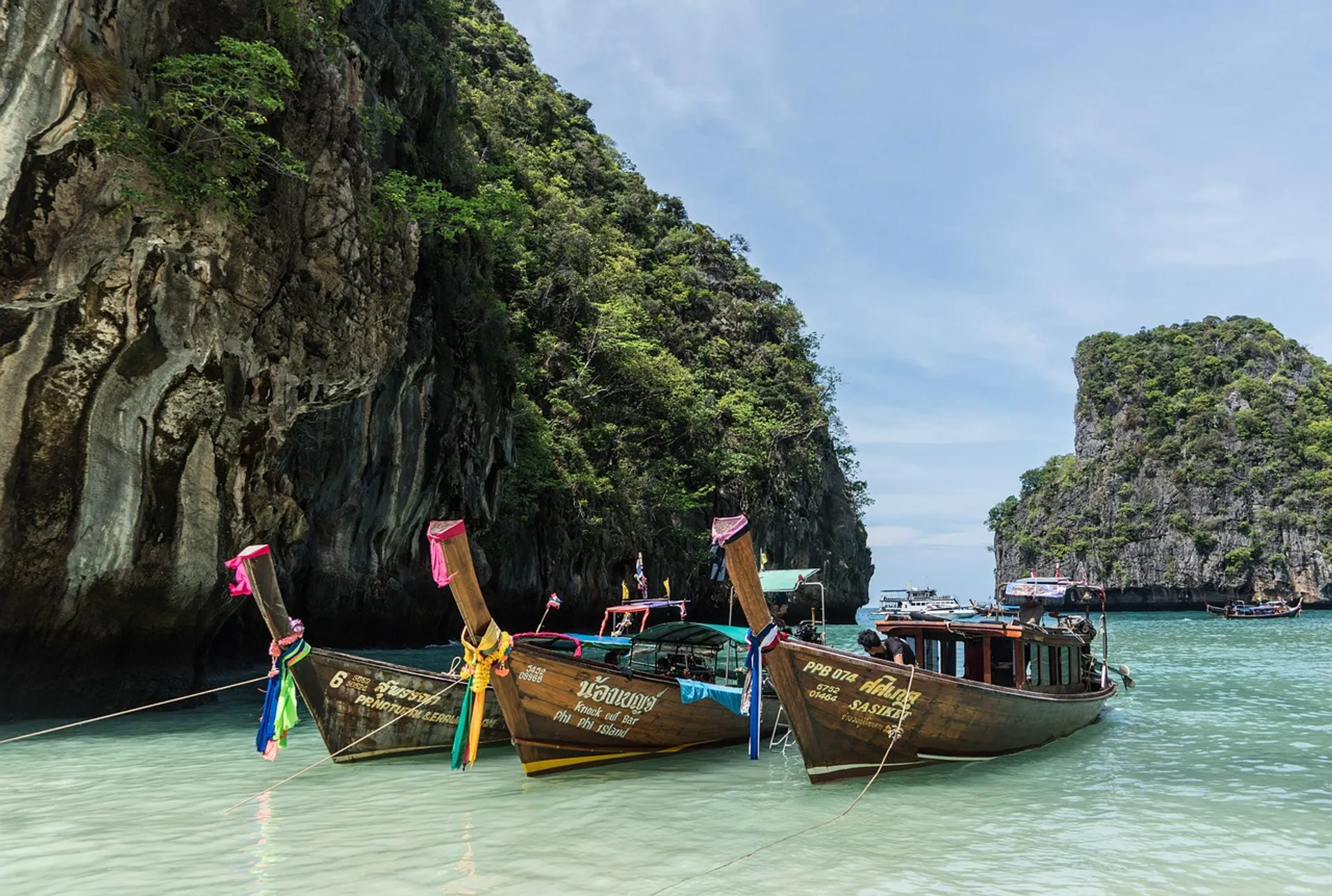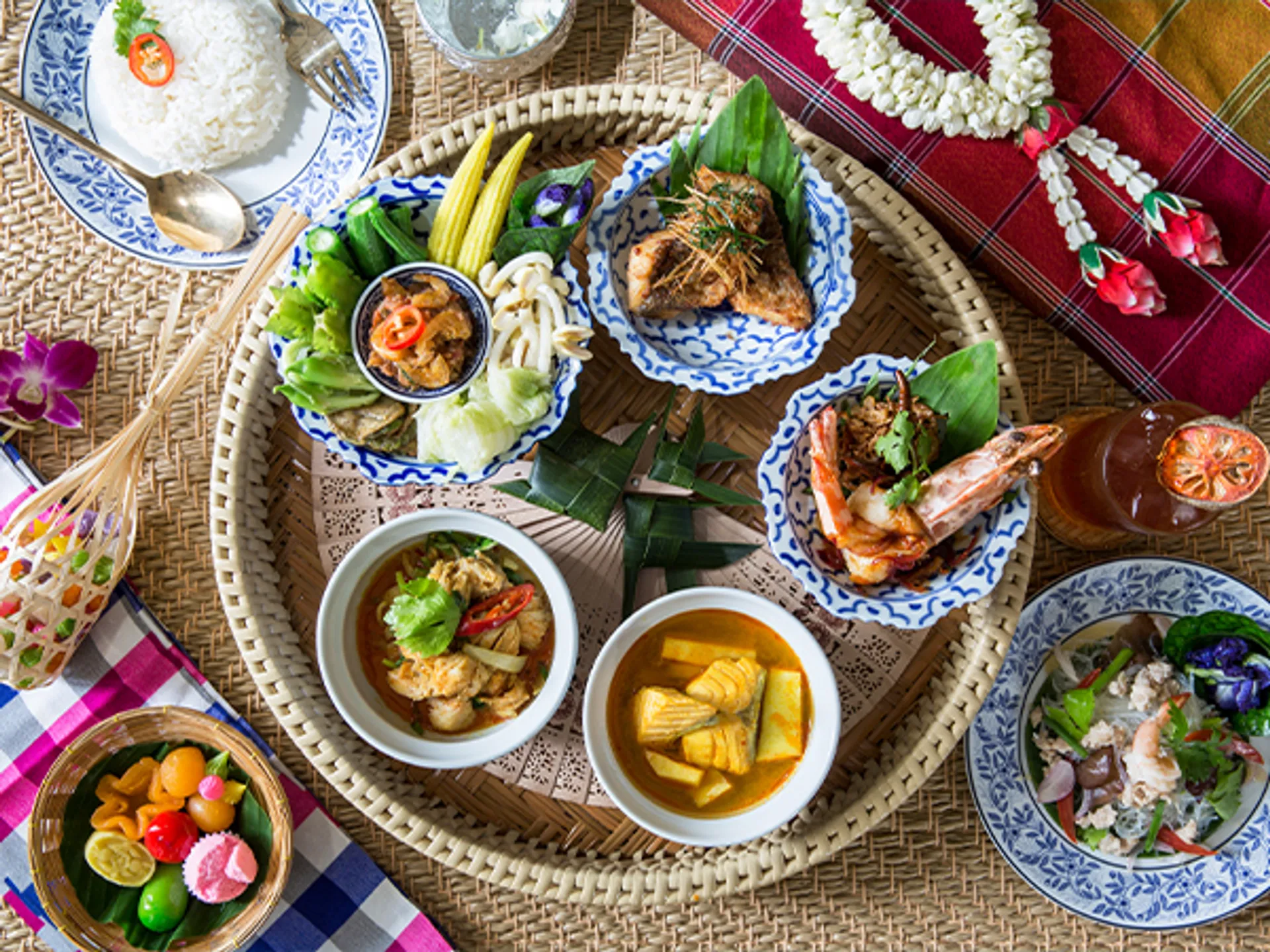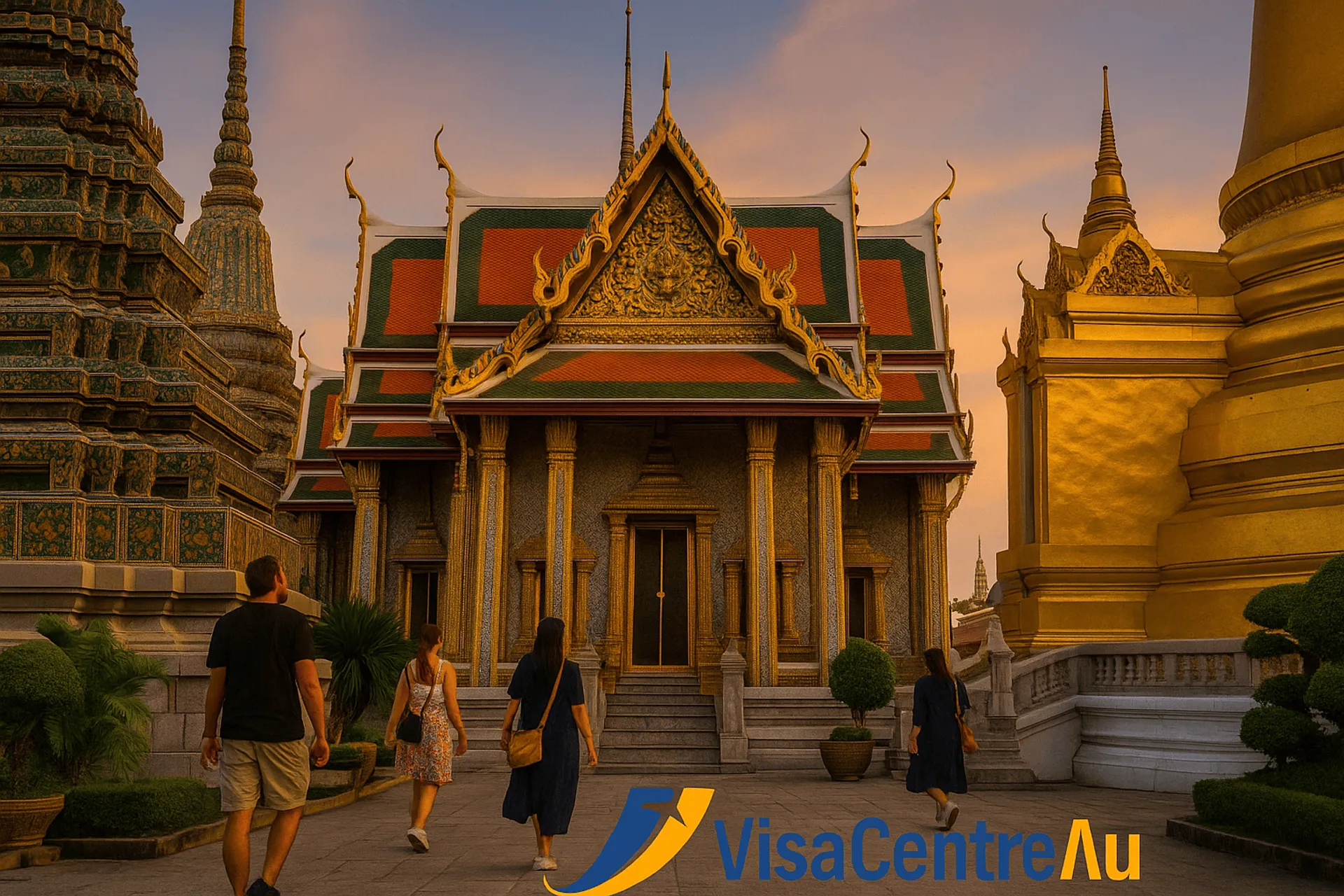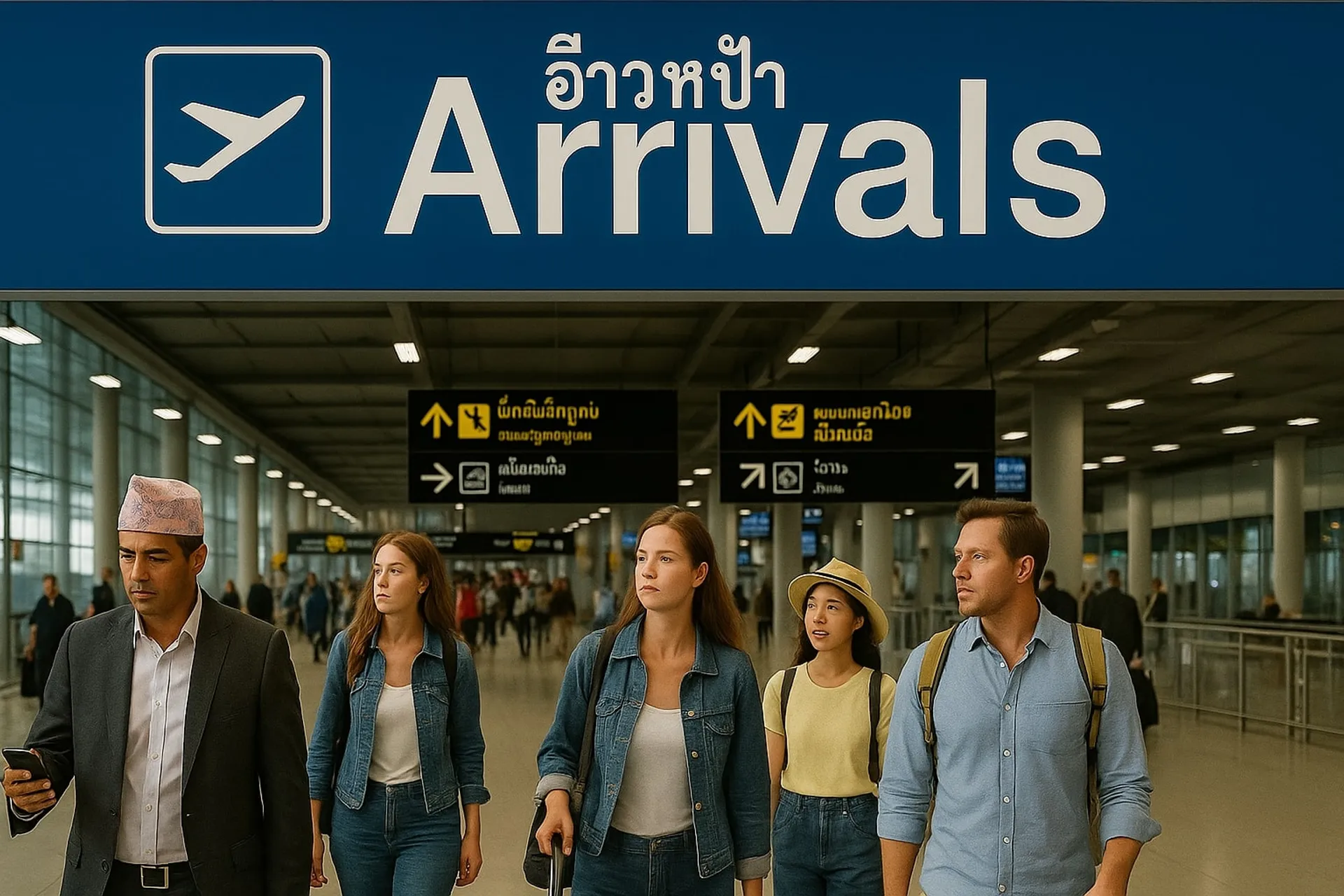




thailand visa for ghanaian
Select Visa Type
60 Days single Entry
Tourist e-Visa
single Entry
Validity 90 Days
Stay 60 Days
Get on
15 Sep 2025
60 Days multiple Entry
Tourist e-Visa
multiple Entry
Validity 180 Days
Stay 60 Days
Get on
15 Sep 2025
thailand Visa Requirements
Photo
Passport
Current Location Proof
Current Residency Status (Visa Permit)
Round trip flight tickets
Bank Statement
How thailand Visa Process Works
Step 1: Apply with Visa Centre Au
fill details & upload required documents via Visa Centre Au.
Step 2: Documents Verification
Your documents will Verified by our advisor. We will contact you if any further information required.
Step 3: Your Visa Gets Processed
eVisa Process
- We will submit your documents to the immigration department.
Embassy visa Process
- visa advisor will be assigned to your Application and assist with your Application and appointment booking.
- Attend visa appointment.
- Submit visa appointment to the immigration.
Step 4: Get Your Approved Visa on
You will receive an email notification of your visa approval and you can download from your Visa Centre Au account.
Reviews & Ratings
4.5/5
Based on 19 reviews
5
100%
4
0%
3
0%
2
0%
1
0%
On Time
Easy
Fast
Reliable
TrustWorthy
Cherrice Blizzard
australia
Immigration site had crashed
I had read on FB that the immigration site had crashed and there were continual issues when i wanted to do my 60 visa. I contacted Visa Centre Au and they processed my visa, no stress, no issues, simple process. I was even able to ring them to discuss my concerns. Thank you Visa Centre Au 🙏 😊

Amisha Dahal
australia
Got visa within a week
Got visa within a week. Very helpful. I will definitely recommend to others as well.

Prashansha Karki
australia
Fast and easy service
Fast and easy service, got a visa in couple of hours. Highly recommended!!

Soney S
australia
Reliable and great service
Very satisfied with the customer service provided recently as the visa was granted within a week. Highly recommended visa service centre if you looking for a professional, trustworthy, reliable, and responsive provider, who helps with your processing overall and clears all your queries with quick responses and great support👍Thankful to Mr Prem, you have been a great help.

Sujan Khatri
nepal
Great staff and easy process
Had a great experience with Visa Centre AU, the process was easier and the team was very responsive and giving me update on each part of the application. Love the service.

Sujan Paudel
australia
Thanks so much to Visa centre Au team…
Thanks so much to Visa centre Au team for all the help. Applying visa from them was really easy and they helped me every step of the way guiding me. My overall experience with the team was amazing and i highly recommend working with them.

Sunita Maharjan
nepal
Easily approachable and very reliable.
Easily approachable and very reliable.

Osama Ahmed Khan
pakistan
Very professional
Very professional Applied visa on 19th and received a day after on 21th Well satisfied 🥰🥰
Alina Chauhan
australia
Very helpful and professional team
Very helpful and professional team. Highly recommended.
Madhu Limbu
australia
Friendly and Convenient
Friendly support. All we had to do was provide the pics of our documents. Very convenient

Nishant Shrestha
nepal
Very Professional
Thank u so much visa centre AU for being so much helpful n understanding in every step of our visa process for thailand. I m very much pleased with ur effort and service. I am very much happy from ur service n Il be recommending my friends n family for choosing ur center. Thank u😍😊😊

Hawraa S
australia
I was in a tight situation but with…
I was in a tight situation but with visa centre he made my life easier Best team I've worked with Deserved the 5 stars

Roshani Thapa
australia
I want to thank visa centre Au for…
I want to thank visa centre Au for exceptional performance for solving visa issues . Greatly appreciate what you have done for me . I am grateful for ur valuable advice .most important is thank you for supporting us during crisis situations. Truly grateful for valuable service and emotional support.

kamal maharan
australia
Thank you for making my life easy
Thank you for making my life easy. As promised Bali visa in 2 days. Best in the business. Very much genuine, they are there to help people and make our life easy while traveling...really great service...once again thank you guys so so much.

Sunny Shrestha
australia
Visa granted in 4 days
I recently applied for a Japan visa through the Visa Centre, and I’m very pleased with the experience. The process was smooth, efficient, and professionally handled. My visa was granted without any issues. Highly recommend their service!

Manik Guragain
thailand
I booked a longtail boat to Phi Phi
I booked a longtail boat to Phi Phi Island through Visa Centre AU, and honestly, it was one of the best decisions I made on my trip. The entire experience—from booking to the actual tour—was smooth and hassle-free. The water was crystal clear, the views were straight out of a postcard, and the peaceful ride on the longtail boat made it feel like a private escape to paradise. Big thanks to the team for their quick response and friendly service. They made everything so easy. If you’re planning a trip to Thailand and want something truly special, I highly recommend booking through them. I’ll 100% be reaching out again for my next adventure. Don’t miss this—it’s worth every cent!
thailand Visa Rejection Reasons
Factors than can get your visa rejected
Expired Passport
Applying with a passport that has expired or expires within 6 months.
Insufficient Funds
Failing to demonstrate enough financial resources to support your stay.
Criminal Record
Having a criminal history that disqualifies you from obtaining a visa.
Previous Visa Violations
Having overstayed or violated the terms of a previous visa.
Frequently Asked Questions

Thailand Travel Tips for Holidaymakers
Thailand – the “Land of Smiles” – is a welcoming, vibrant country famed for its cities, culture and beaches. In fact, it’s often cited as “one of the safest countries in southeast Asia for travelers”. Now that your Thai visa is approved, your adventure truly begins. Before you go, learn key tips on money, transport, culture, safety and immigration to make the most of your trip. Whether you secured a visa through Visa Centre Australia or another provider, this guide will help you navigate every part of your Thailand journey.
Money & Currency
- Thai Baht (THB): Thailand’s currency is the baht. You can exchange foreign currency (e.g. AUD) in banks or authorized changers in cities and tourist areas. ATMs are widely available in cities and towns, and most hotels/restaurants accept major credit cards. However, carry some cash for markets, taxis and street vendors.
- Safe Exchange: Only use official money changers or bank ATMs. Avoid on-the-street exchangers and always check notes for damage or counterfeits. Keep passports or ID handy when exchanging large amounts, as required by law.
- Card Skimming: Beware of ATM scams – skimming devices are reported. Use ATMs in bank lobbies or shopping malls, cover your PIN, and regularly check bank statements. Carry only the cards/cash you need each day, and separate backup funds (for example, keep one credit card and some cash in a secure, hidden pouch).
Transportation in Thailand
Thailand’s transport options are plentiful, especially in big cities. Bangkok has modern rail systems: the elevated BTS Skytrain and underground MRT subway. These run every few minutes and connect major areas – as one guide notes, the BTS is an “easy and efficient way to move between busy areas”. Using the Skytrain or subway lets you bypass Bangkok’s notorious traffic jams and quickly reach places like the Sukhumvit shopping district or Silom business area.
Taxis and Tuk-Tuks: Metered taxis (usually orange or green) are abundant and air-conditioned. Official taxis display a driver ID card on the dashboard. Always insist on using the meter. Tuk-tuks (3-wheelers) are iconic and fun for short rides, but note they are more expensive per km than taxis. Expect roughly 80–150 THB for a short tuk-tuk ride. If you do take a tuk-tuk, agree on a price first or be prepared to negotiate – drivers often charge tourists more. Ride-sharing apps (Grab is popular) work well: just double-check the car’s license plate and driver name before you hop in. For any unmetered taxi, tuk-tuk or motorcycle taxi, agree on the fare before starting the ride.
Other Local Travel: Cheap local buses run everywhere, though they can be slow and crowding. In provinces and smaller cities (like Chiang Mai), you’ll see songthaews – red pickup trucks with bench seats – which charge a flat fare for a route. Motorcycle taxis are plentiful for short distances (and cheaper than taxis) – they zip through traffic but ride with one person on the back, often with no helmet (wear one if you can). Finally, Thailand is well-connected by domestic flights (AirAsia, Nok Air, Thai VietJet etc.) for travel between cities, and overnight trains/buses offer budget travel to Chiang Mai, Hua Hin, Ayutthaya and beyond.
Language & Culture Etiquette
- Basic Thai: English is widely spoken in tourist areas, but learning a few Thai words goes a long way. Greet people with “Sawasdee” (hello/goodbye) and add “krub” (for men) or “ka” (for women) to show respect. For example, “thank you” is “khop khun krub/ka”. Thai people will appreciate even simple effort, and using polite particles helps smooth interactions.
- Wai Greeting: Thais commonly use the wai (palms together, slight bow) to greet and show respect. Return a wai if someone greets you. Children usually wai older people first, who may respond without bowing.
- Respect and Modesty: In Thailand, courtesy is prized. Never raise your voice or show anger in public – maintain a calm tone. Dress modestly when visiting temples and religious sites: cover shoulders and knees, and remove hats. You’ll notice shoe racks at temple or home entrances – always remove your shoes before entering. Inappropriate attire (e.g. sleeveless tops or short shorts at temples) can deny you entry.
- Do’s and Don’ts: Never touch anyone’s head or hair (the head is sacred) and avoid pointing your feet at people or sacred objects – feet are considered the lowest, “dirtiest” part of the body. Don’t put your feet up on tables or chairs, or wave to someone with your foot. Also, Thais have deep respect for the monarchy and Buddha – avoid any disrespect. For example, stand in silence if you happen to hear the national anthem in public, and never touch or climb on Buddha statues.
- Royal Family: Thais hold their royal family in extremely high regard. Never make negative or humorous comments about the King or royal symbols – such acts are against the law and very offensive.
Food & Drink
Thai cuisine is a major highlight of any trip. Street food stalls and markets serve delicious dishes: don’t miss pad Thai (noodles), gaeng keow wan (green curry), tom yum soup, or mango sticky rice for dessert. Thai food often uses chili, garlic, and fish sauce (fermented anchovies), so specify “mai phet” (not spicy) or “khong mai sai naam bpla” (no fish sauce) if you have preferences or allergies. Eat where locals queue – busy stalls mean turnover and fresher food.
- Safe Eating: Stick to freshly cooked foods and eat at places that look clean. Raw salads and undercooked meats carry higher risk. “Avoid tap water in Thailand; drink bottled or filtered water,” advises local health guides. Use bottled water for brushing your teeth, and be cautious with ice – only use ice if you know it’s from purified water. Fruit juices and shakes are refreshing, but ensure they use clean ice or drink from fruit where the peel is removed.
- Street Food: Trying street food is part of the fun, but make smart choices. Look for high-turnover stalls (people eating means the food is freshly made). Sanitization: Carry hand sanitizer and use it before eating. If you have a sensitive stomach, consider taking an anti-diarrheal medicine along. A mild tourist stomach can happen to anyone – just keep hydrated.
- Tipping: Tipping isn’t required, but is appreciated. In restaurants, leaving small change or rounding up the bill is a kind gesture. Hotel porters typically expect 20–50 THB per bag. For taxis, you can round up or add 10–20 THB to cover luggage help.
Safety & Health
Thailand is generally safe, but common-sense precautions go a long way.
- Petty Theft: Incidents of pickpocketing or bag-snatching do occur in crowded areas. Australian travel advice notes that “money and passports have been stolen from hostel rooms and from bags on public transport”. To reduce risk, never leave valuables unattended. Keep cameras, phones and wallets in a front bag. Consider a money belt or hidden pouch for passports and cash. If you store luggage under buses or trains, be cautious – use locks on suitcases and keep important items in your carry-on. Tourist police (dial 1155) are available if you need help.
- Scams: Be aware of common tourist scams. These include tuk-tuk drivers offering very cheap city tours that end at overpriced shops, gem sellers with “too-good-to-be-true” deals, or unofficial travel “agents” promising cheap tickets. If something feels off, trust your instincts. Use reputable tour operators, and always agree on prices in advance for tuk-tuks, taxis and tours.
- Emergencies: Note emergency numbers – dial 191 for police or 1155 for the Tourist Police. For medical emergencies, Bangkok’s number is 1724 (elsewhere, 1669 for ambulance). It’s wise to save these on your phone and know your hotel’s address (Thai hotels can provide an English-labeled address card).
- Health: Travel insurance is strongly recommended (with cover for health care and evacuation). U.S. and Australian authorities urge travelers to buy a comprehensive policy before departure. Vaccinations: Check that routine vaccines (MMR, tetanus, etc.) are up-to-date. Thailand has some risk of dengue (mosquito-borne fever), so use insect repellent and consider long sleeves/pants at dusk in jungle or rural areas. Thailand has modern clinics and hospitals in Bangkok/Phuket; always seek prompt medical help if injured or ill.
- Sun & Heat: Thailand’s sun can be intense. Wear sunscreen, a hat and stay hydrated. Heat exhaustion can happen to anyone, so drink plenty of safe fluids and take breaks in shade or air-conditioning.
Immigration Checks & Entry Requirements
When you arrive in Thailand, have your documents ready. An immigration officer will check your passport, visa approval and stamping forms. Tickets/Funds: You may be asked to show a return or onward flight ticket and proof of sufficient funds for your stay. Keep copies or photos of these documents handy (many airlines check before boarding).
- Entry Stamp: Make sure you receive your official entry stamp from the immigration officer. Do not get visas or stamps from unofficial agencies – altered or fake entry stamps are a serious offense that can lead to fines, imprisonment or deportation. The date on your stamp is your legal entry date, even if your visa sticker says otherwise.
- Visa Duration: Note the number of days allowed by your stamp. If you need to stay longer, apply for an extension at a local immigration office well before expiry. Overstaying is penalized harshly: even accidentally overstaying by a day can lead to fines, detention, and bans (1–10 years) on re-entry. Always double-check your permitted stay and plan your exit accordingly.
- Registration: If you plan to stay continuously in Thailand beyond 90 days, the law requires you to report your address to immigration every 90 days. Most hotels can help you with this if needed.
By following these tips, you can focus on enjoying Thailand’s wonders instead of worrying about logistics. In summary, keep your travel documents secure, respect local customs, and make smart choices on transport, money and health. With your visa in hand (for example, applied through Visa Centre Au), you are now ready for the journey. Have a fantastic trip – safe travels and sawasdee krub/ka!

Thailand Digital Arrival Card (TDAC) & Visa Requirements: A Guide for Travelers to Thailand
How to Apply for the Thailand Digital Arrival Card
- Prepare your travel information: Have your passport ready along with your flight (or land border crossing) details and accommodation booking confirmation. You will need to enter your passport number, arrival date, and hotel address in Thailand.
- Visit the official TDAC website: Go to the Thailand Immigration Bureau’s official TDAC site (tdac.immigration.go.th) and select “Arrival Card.” Fill in your personal details – name, nationality, passport number, date of birth, gender, and contact information. Only the fields marked with a red asterisk are required.
- Enter your travel details: On the next page, provide information about your trip. This includes your mode of travel (e.g. airplane flight number or vehicle), the arrival date, and the address of your accommodation in Thailand. (Note: departure details are optional but you should have your onward travel plans ready, as you may be asked for proof of a return ticket upon arrival.)
- Complete the health declaration: The TDAC form will ask for a simple health/travel declaration. List any countries you have visited in the past two weeks. If you have been in a country with health warnings (e.g. yellow fever), you may need to show vaccination proof on arrival.
- Submit and save your TDAC confirmation: Once all sections are filled, submit the form. You will receive an email confirmation of your TDAC registration. Save this confirmation on your phone or print a copy. You will need to present it to Thai immigration officials when entering the country. (Each traveler must complete a TDAC, but the system allows adding family members under “Add Other Travelers” if you’re traveling together.)
Importance of the Digital Arrival Card (TDAC)
- Enhanced security and health screening: The TDAC’s health declaration helps Thai authorities track visitor travel history and manage disease risks before arrival, improving public health monitoring. It also lets immigration verify traveler identities in advance, strengthening border security.
- Faster immigration processing: With data pre-entered into the system, arriving passengers can clear immigration more quickly. There’s no more pen-and-paper forms to fill out on the plane or at the gate, reducing queues and errors. Thailand’s government notes that the TDAC will “streamline immigration procedures” as part of modernizing border control.
- Free and user-friendly: Completing the TDAC is completely free – there is no application fee. The system supports multiple languages and can be accessed on any internet-connected device (smartphone, tablet, or laptop). You can apply up to 72 hours before travel (e.g. 3 days in advance) to ensure the confirmation is ready.
- Convenient for group travel: If you’re traveling with family or friends, you can handle multiple TDACs together. The system lets you “Add Other Travelers” and submit their cards in one session.
Eligibility and Entry Requirements
- TDAC Eligibility: All non-Thai nationals entering Thailand (by air, land, or sea) must submit a Thailand Digital Arrival Card. The only exceptions are travelers who transit through Thailand without clearing immigration or those using a special border pass for nearby countries. In practice, this means every tourist and visa-holder needs the TDAC.
- Submission deadline: The TDAC must be submitted no more than 3 days (72 hours) before your arrival date. You can even complete it on the same day you travel, but applying a few days early is recommended to avoid any last-minute issues.
- Thailand Visa for Nepalese Citizens: Nepalese passport holders are not eligible for visa-free entry or visa-on-arrival in Thailand. (Only Nepali officials with official passports are exempt.) This means Nepalese travelers must obtain a Thai visa before departing Nepal. Typically, visitors apply for a Thai Tourist Visa (TR) good for a 60–90 day stay (single-entry or multiple-entry). The visa application process is separate from the TDAC, but you’ll need the visa in your passport to board a flight to Thailand.
- Visa Application Process: Thailand uses an online e-Visa system for visa applications. Residents of Australia (for example, including Nepalese nationals living in Australia) apply for a Thai tourist visa at the official portal (thaievisa.go.th) launched in March 2024. Similarly, from Kathmandu the Royal Thai Embassy now requires Nepali applicants to use the same e-Visa platform. In all cases, pay attention to the required documents listed for your visa application.
- Required Documents: When applying for a Thai tourist visa, you will typically need a valid passport (at least 6 months validity from your entry date), a completed visa application form, and one or two recent passport-size photos. You must also submit evidence of travel plans and support, such as a confirmed return flight itinerary and hotel booking or invitation letter. Proof of sufficient funds is usually required – for example, Thai embassies often ask for a bank statement showing a deposit (e.g. around THB 200,000 for a multiple-entry visa). Additional documents (like employment or income proof) may be requested. Be sure to check the specific requirements of the Thai embassy or consulate where you apply.
Thailand Visa Support Services
Navigating the TDAC and visa process can be complex, especially with new rules. Visa Centre AU offers comprehensive Thailand visa support services to help travelers meet all entry requirements. Our experts can assist Nepalese and other applicants by:
- Guiding your TDAC application: We help ensure your Thailand Digital Arrival Card is filled out correctly and submitted on time, avoiding delays at the airport.
- Preparing your visa application: We advise on the correct Thai visa type (typically a Tourist TR visa for short visits) and our expert team will apply your visa hassle free. You do not need to worry about your visa and you can plan your trip.
- Document verification: We review your visa application packet (passport, photos, itinerary, bank statements, etc.) to make sure nothing is missing or incorrect before submission.
- Latest entry rules: We keep updated on Thailand entry requirements (e.g. the TDAC rule for 2025) so you’ll have the current information for your trip.
By working with Visa Centre AU’s Thailand visa support team, Nepalese nationals and other travelers can be confident they have met Thailand’s 2025 entry requirements. For example, you’ll have peace of mind knowing both your visa and Digital Arrival Card are in order, so you can focus on enjoying Thailand’s sights and culture.
Sources: Official Thai immigration announcements and Royal Thai consulate and embassy guidelines.

Thailand Travel Tips for Holidaymakers
Thailand – the “Land of Smiles” – is a welcoming, vibrant country famed for its cities, culture and beaches. In fact, it’s often cited as “one of the safest countries in southeast Asia for travelers”. Now that your Thai visa is approved, your adventure truly begins. Before you go, learn key tips on money, transport, culture, safety and immigration to make the most of your trip. Whether you secured a visa through Visa Centre Australia or another provider, this guide will help you navigate every part of your Thailand journey.
Money & Currency
- Thai Baht (THB): Thailand’s currency is the baht. You can exchange foreign currency (e.g. AUD) in banks or authorized changers in cities and tourist areas. ATMs are widely available in cities and towns, and most hotels/restaurants accept major credit cards. However, carry some cash for markets, taxis and street vendors.
- Safe Exchange: Only use official money changers or bank ATMs. Avoid on-the-street exchangers and always check notes for damage or counterfeits. Keep passports or ID handy when exchanging large amounts, as required by law.
- Card Skimming: Beware of ATM scams – skimming devices are reported. Use ATMs in bank lobbies or shopping malls, cover your PIN, and regularly check bank statements. Carry only the cards/cash you need each day, and separate backup funds (for example, keep one credit card and some cash in a secure, hidden pouch).
Transportation in Thailand
Thailand’s transport options are plentiful, especially in big cities. Bangkok has modern rail systems: the elevated BTS Skytrain and underground MRT subway. These run every few minutes and connect major areas – as one guide notes, the BTS is an “easy and efficient way to move between busy areas”. Using the Skytrain or subway lets you bypass Bangkok’s notorious traffic jams and quickly reach places like the Sukhumvit shopping district or Silom business area.
Taxis and Tuk-Tuks: Metered taxis (usually orange or green) are abundant and air-conditioned. Official taxis display a driver ID card on the dashboard. Always insist on using the meter. Tuk-tuks (3-wheelers) are iconic and fun for short rides, but note they are more expensive per km than taxis. Expect roughly 80–150 THB for a short tuk-tuk ride. If you do take a tuk-tuk, agree on a price first or be prepared to negotiate – drivers often charge tourists more. Ride-sharing apps (Grab is popular) work well: just double-check the car’s license plate and driver name before you hop in. For any unmetered taxi, tuk-tuk or motorcycle taxi, agree on the fare before starting the ride.
Other Local Travel: Cheap local buses run everywhere, though they can be slow and crowding. In provinces and smaller cities (like Chiang Mai), you’ll see songthaews – red pickup trucks with bench seats – which charge a flat fare for a route. Motorcycle taxis are plentiful for short distances (and cheaper than taxis) – they zip through traffic but ride with one person on the back, often with no helmet (wear one if you can). Finally, Thailand is well-connected by domestic flights (AirAsia, Nok Air, Thai VietJet etc.) for travel between cities, and overnight trains/buses offer budget travel to Chiang Mai, Hua Hin, Ayutthaya and beyond.
Language & Culture Etiquette
- Basic Thai: English is widely spoken in tourist areas, but learning a few Thai words goes a long way. Greet people with “Sawasdee” (hello/goodbye) and add “krub” (for men) or “ka” (for women) to show respect. For example, “thank you” is “khop khun krub/ka”. Thai people will appreciate even simple effort, and using polite particles helps smooth interactions.
- Wai Greeting: Thais commonly use the wai (palms together, slight bow) to greet and show respect. Return a wai if someone greets you. Children usually wai older people first, who may respond without bowing.
- Respect and Modesty: In Thailand, courtesy is prized. Never raise your voice or show anger in public – maintain a calm tone. Dress modestly when visiting temples and religious sites: cover shoulders and knees, and remove hats. You’ll notice shoe racks at temple or home entrances – always remove your shoes before entering. Inappropriate attire (e.g. sleeveless tops or short shorts at temples) can deny you entry.
- Do’s and Don’ts: Never touch anyone’s head or hair (the head is sacred) and avoid pointing your feet at people or sacred objects – feet are considered the lowest, “dirtiest” part of the body. Don’t put your feet up on tables or chairs, or wave to someone with your foot. Also, Thais have deep respect for the monarchy and Buddha – avoid any disrespect. For example, stand in silence if you happen to hear the national anthem in public, and never touch or climb on Buddha statues.
- Royal Family: Thais hold their royal family in extremely high regard. Never make negative or humorous comments about the King or royal symbols – such acts are against the law and very offensive.
Food & Drink
Thai cuisine is a major highlight of any trip. Street food stalls and markets serve delicious dishes: don’t miss pad Thai (noodles), gaeng keow wan (green curry), tom yum soup, or mango sticky rice for dessert. Thai food often uses chili, garlic, and fish sauce (fermented anchovies), so specify “mai phet” (not spicy) or “khong mai sai naam bpla” (no fish sauce) if you have preferences or allergies. Eat where locals queue – busy stalls mean turnover and fresher food.
- Safe Eating: Stick to freshly cooked foods and eat at places that look clean. Raw salads and undercooked meats carry higher risk. “Avoid tap water in Thailand; drink bottled or filtered water,” advises local health guides. Use bottled water for brushing your teeth, and be cautious with ice – only use ice if you know it’s from purified water. Fruit juices and shakes are refreshing, but ensure they use clean ice or drink from fruit where the peel is removed.
- Street Food: Trying street food is part of the fun, but make smart choices. Look for high-turnover stalls (people eating means the food is freshly made). Sanitization: Carry hand sanitizer and use it before eating. If you have a sensitive stomach, consider taking an anti-diarrheal medicine along. A mild tourist stomach can happen to anyone – just keep hydrated.
- Tipping: Tipping isn’t required, but is appreciated. In restaurants, leaving small change or rounding up the bill is a kind gesture. Hotel porters typically expect 20–50 THB per bag. For taxis, you can round up or add 10–20 THB to cover luggage help.
Safety & Health
Thailand is generally safe, but common-sense precautions go a long way.
- Petty Theft: Incidents of pickpocketing or bag-snatching do occur in crowded areas. Australian travel advice notes that “money and passports have been stolen from hostel rooms and from bags on public transport”. To reduce risk, never leave valuables unattended. Keep cameras, phones and wallets in a front bag. Consider a money belt or hidden pouch for passports and cash. If you store luggage under buses or trains, be cautious – use locks on suitcases and keep important items in your carry-on. Tourist police (dial 1155) are available if you need help.
- Scams: Be aware of common tourist scams. These include tuk-tuk drivers offering very cheap city tours that end at overpriced shops, gem sellers with “too-good-to-be-true” deals, or unofficial travel “agents” promising cheap tickets. If something feels off, trust your instincts. Use reputable tour operators, and always agree on prices in advance for tuk-tuks, taxis and tours.
- Emergencies: Note emergency numbers – dial 191 for police or 1155 for the Tourist Police. For medical emergencies, Bangkok’s number is 1724 (elsewhere, 1669 for ambulance). It’s wise to save these on your phone and know your hotel’s address (Thai hotels can provide an English-labeled address card).
- Health: Travel insurance is strongly recommended (with cover for health care and evacuation). U.S. and Australian authorities urge travelers to buy a comprehensive policy before departure. Vaccinations: Check that routine vaccines (MMR, tetanus, etc.) are up-to-date. Thailand has some risk of dengue (mosquito-borne fever), so use insect repellent and consider long sleeves/pants at dusk in jungle or rural areas. Thailand has modern clinics and hospitals in Bangkok/Phuket; always seek prompt medical help if injured or ill.
- Sun & Heat: Thailand’s sun can be intense. Wear sunscreen, a hat and stay hydrated. Heat exhaustion can happen to anyone, so drink plenty of safe fluids and take breaks in shade or air-conditioning.
Immigration Checks & Entry Requirements
When you arrive in Thailand, have your documents ready. An immigration officer will check your passport, visa approval and stamping forms. Tickets/Funds: You may be asked to show a return or onward flight ticket and proof of sufficient funds for your stay. Keep copies or photos of these documents handy (many airlines check before boarding).
- Entry Stamp: Make sure you receive your official entry stamp from the immigration officer. Do not get visas or stamps from unofficial agencies – altered or fake entry stamps are a serious offense that can lead to fines, imprisonment or deportation. The date on your stamp is your legal entry date, even if your visa sticker says otherwise.
- Visa Duration: Note the number of days allowed by your stamp. If you need to stay longer, apply for an extension at a local immigration office well before expiry. Overstaying is penalized harshly: even accidentally overstaying by a day can lead to fines, detention, and bans (1–10 years) on re-entry. Always double-check your permitted stay and plan your exit accordingly.
- Registration: If you plan to stay continuously in Thailand beyond 90 days, the law requires you to report your address to immigration every 90 days. Most hotels can help you with this if needed.
By following these tips, you can focus on enjoying Thailand’s wonders instead of worrying about logistics. In summary, keep your travel documents secure, respect local customs, and make smart choices on transport, money and health. With your visa in hand (for example, applied through Visa Centre Au), you are now ready for the journey. Have a fantastic trip – safe travels and sawasdee krub/ka!

Thailand Digital Arrival Card (TDAC) & Visa Requirements: A Guide for Travelers to Thailand
How to Apply for the Thailand Digital Arrival Card
- Prepare your travel information: Have your passport ready along with your flight (or land border crossing) details and accommodation booking confirmation. You will need to enter your passport number, arrival date, and hotel address in Thailand.
- Visit the official TDAC website: Go to the Thailand Immigration Bureau’s official TDAC site (tdac.immigration.go.th) and select “Arrival Card.” Fill in your personal details – name, nationality, passport number, date of birth, gender, and contact information. Only the fields marked with a red asterisk are required.
- Enter your travel details: On the next page, provide information about your trip. This includes your mode of travel (e.g. airplane flight number or vehicle), the arrival date, and the address of your accommodation in Thailand. (Note: departure details are optional but you should have your onward travel plans ready, as you may be asked for proof of a return ticket upon arrival.)
- Complete the health declaration: The TDAC form will ask for a simple health/travel declaration. List any countries you have visited in the past two weeks. If you have been in a country with health warnings (e.g. yellow fever), you may need to show vaccination proof on arrival.
- Submit and save your TDAC confirmation: Once all sections are filled, submit the form. You will receive an email confirmation of your TDAC registration. Save this confirmation on your phone or print a copy. You will need to present it to Thai immigration officials when entering the country. (Each traveler must complete a TDAC, but the system allows adding family members under “Add Other Travelers” if you’re traveling together.)
Importance of the Digital Arrival Card (TDAC)
- Enhanced security and health screening: The TDAC’s health declaration helps Thai authorities track visitor travel history and manage disease risks before arrival, improving public health monitoring. It also lets immigration verify traveler identities in advance, strengthening border security.
- Faster immigration processing: With data pre-entered into the system, arriving passengers can clear immigration more quickly. There’s no more pen-and-paper forms to fill out on the plane or at the gate, reducing queues and errors. Thailand’s government notes that the TDAC will “streamline immigration procedures” as part of modernizing border control.
- Free and user-friendly: Completing the TDAC is completely free – there is no application fee. The system supports multiple languages and can be accessed on any internet-connected device (smartphone, tablet, or laptop). You can apply up to 72 hours before travel (e.g. 3 days in advance) to ensure the confirmation is ready.
- Convenient for group travel: If you’re traveling with family or friends, you can handle multiple TDACs together. The system lets you “Add Other Travelers” and submit their cards in one session.
Eligibility and Entry Requirements
- TDAC Eligibility: All non-Thai nationals entering Thailand (by air, land, or sea) must submit a Thailand Digital Arrival Card. The only exceptions are travelers who transit through Thailand without clearing immigration or those using a special border pass for nearby countries. In practice, this means every tourist and visa-holder needs the TDAC.
- Submission deadline: The TDAC must be submitted no more than 3 days (72 hours) before your arrival date. You can even complete it on the same day you travel, but applying a few days early is recommended to avoid any last-minute issues.
- Thailand Visa for Nepalese Citizens: Nepalese passport holders are not eligible for visa-free entry or visa-on-arrival in Thailand. (Only Nepali officials with official passports are exempt.) This means Nepalese travelers must obtain a Thai visa before departing Nepal. Typically, visitors apply for a Thai Tourist Visa (TR) good for a 60–90 day stay (single-entry or multiple-entry). The visa application process is separate from the TDAC, but you’ll need the visa in your passport to board a flight to Thailand.
- Visa Application Process: Thailand uses an online e-Visa system for visa applications. Residents of Australia (for example, including Nepalese nationals living in Australia) apply for a Thai tourist visa at the official portal (thaievisa.go.th) launched in March 2024. Similarly, from Kathmandu the Royal Thai Embassy now requires Nepali applicants to use the same e-Visa platform. In all cases, pay attention to the required documents listed for your visa application.
- Required Documents: When applying for a Thai tourist visa, you will typically need a valid passport (at least 6 months validity from your entry date), a completed visa application form, and one or two recent passport-size photos. You must also submit evidence of travel plans and support, such as a confirmed return flight itinerary and hotel booking or invitation letter. Proof of sufficient funds is usually required – for example, Thai embassies often ask for a bank statement showing a deposit (e.g. around THB 200,000 for a multiple-entry visa). Additional documents (like employment or income proof) may be requested. Be sure to check the specific requirements of the Thai embassy or consulate where you apply.
Thailand Visa Support Services
Navigating the TDAC and visa process can be complex, especially with new rules. Visa Centre AU offers comprehensive Thailand visa support services to help travelers meet all entry requirements. Our experts can assist Nepalese and other applicants by:
- Guiding your TDAC application: We help ensure your Thailand Digital Arrival Card is filled out correctly and submitted on time, avoiding delays at the airport.
- Preparing your visa application: We advise on the correct Thai visa type (typically a Tourist TR visa for short visits) and our expert team will apply your visa hassle free. You do not need to worry about your visa and you can plan your trip.
- Document verification: We review your visa application packet (passport, photos, itinerary, bank statements, etc.) to make sure nothing is missing or incorrect before submission.
- Latest entry rules: We keep updated on Thailand entry requirements (e.g. the TDAC rule for 2025) so you’ll have the current information for your trip.
By working with Visa Centre AU’s Thailand visa support team, Nepalese nationals and other travelers can be confident they have met Thailand’s 2025 entry requirements. For example, you’ll have peace of mind knowing both your visa and Digital Arrival Card are in order, so you can focus on enjoying Thailand’s sights and culture.
Sources: Official Thai immigration announcements and Royal Thai consulate and embassy guidelines.

Your Definitive Guide to Thailand Visas: Navigating Entry and Long-Term Stay 2025
Thailand's immigration policies are in the midst of a significant transformation, moving towards greater accessibility and digitalization to attract a new generation of global travelers and professionals. This shift is highlighted by the recent implementation of extended visa-free stays and the introduction of new digital travel requirements. The goal is to streamline entry procedures and offer more flexible options, positioning Thailand as a premier destination for both short-term tourism and long-term residency. This guide provides a comprehensive overview of the current visa landscape, offering clarity on the requirements, processes, and strategic considerations for navigating the Kingdom's evolving immigration system with confidence.
The Most Common Ways to Enter Thailand on a Visa
The 60-Day Tourist Visa Exemption Scheme
The Tourist Visa Exemption Scheme is a program that allows citizens of certain countries to enter Thailand without obtaining a visa in advance. As of July 15, 2024, the period of stay under this scheme was officially extended from 30 to 60 days for nationals of 93 countries and territories. This entry is permitted for tourism, business engagements, urgent work, or other ad-hoc work purposes.
To be eligible for this scheme, travelers must meet a set of specific requirements. A passport or travel document must have a validity of at least six months from the date of entry. Visitors must also provide proof of adequate finances to support their stay, which is set at 20,000 Thai Baht (THB) per person or 40,000 THB per family. This proof can be in the form of a traveler's cheque or cash. Additionally, a confirmed ticket for onward travel (air, train, bus, or boat) is required to show the traveler's intent to leave Thailand within the 60-day period. Open tickets or tickets to a neighboring country are typically not accepted as proof of onward travel.
A significant new requirement for all foreign nationals, including those entering under this exemption, is the completion of the Thailand Digital Arrival Card (TDAC) starting from May 1, 2025. The TDAC, which replaces the former paper TM6 form, must be completed electronically three days before arrival. The shift from a 30-day to a 60-day visa exemption is a strategic policy decision by the Thai government to attract visitors for longer periods, which in turn boosts local spending on accommodation, dining, and activities. This change, combined with the streamlining of the entry process through the TDAC, is part of a broader national initiative to make Thailand a more accessible and appealing destination for extended stays, enhancing its competitive edge against other regional travel markets. The TDAC system itself serves as a modern tool for visitor tracking and security without the former paperwork burden.
The 15-Day Visa on Arrival (VoA)
The Visa on Arrival (VoA) is a short-term visa option available to passport holders from a specific list of countries. Unlike a traditional visa, it is issued directly at designated immigration checkpoints in Thailand upon arrival. This visa is exclusively for tourism and grants a stay of no more than 15 days. As of July 15, 2024, nationals of 31 countries and territories became eligible to apply for the VoA.
To secure a VoA, applicants must present a passport from an eligible country that has at least 30 days of validity remaining. They must also provide a completed VoA application form, a recent passport-sized photograph, proof of accommodation, and proof of a confirmed return ticket for departure within the 15-day stay limit. A traveler must also demonstrate financial means of at least 10,000 THB for a single traveler or 20,000 THB per family. The VoA fee is 2,000 THB, payable in cash in Thai Baht at the immigration counter. As with the visa exemption, the TDAC must be completed for every foreign national arriving in Thailand starting May 1, 2025, regardless of their visa status.
It is important to understand the practical difference between the Visa on Arrival and the new Tourist Visa Exemption. For a traveler who is a national of a country on both lists, the Visa on Arrival is an inferior option. The VoA costs 2,000 THB for a 15-day stay, while the visa exemption is free and grants a much longer 60-day stay. The VoA stay is also far more difficult to extend, with most sources indicating a maximum extension of only seven days. In contrast, the 60-day visa exemption can be extended for an additional 30 days. Therefore, the VoA is now a niche option, primarily serving travelers from countries that are on the VoA list but not the more extensive visa exemption list.
The Traditional Tourist Visa (TR)
The Traditional Tourist Visa (TR) is an entry permit that must be obtained from a Royal Thai Embassy or Consulate before traveling to Thailand. This visa is intended for foreign nationals who plan to visit Thailand for tourism, leisure, or medical treatment. The TR visa is available in two forms: a Single-Entry Tourist Visa and a Multiple-Entry Tourist Visa (METV).
The Single-Entry TR visa is valid for three months from the date of issuance and allows a stay of up to 60 days upon entry. This is ideal for a single, extended trip. The METV, on the other hand, is valid for six months from the date of issuance and allows for unlimited entries during that period, with each stay capped at 60 days. The METV is a highly convenient option for frequent travelers, business executives, or individuals who use Thailand as a base for exploring the wider Southeast Asian region.
The general requirements for a TR visa include a passport valid for at least six months from the date of travel, a completed visa application form, and a recent passport-sized photograph. Applicants must also submit a flight itinerary, proof of accommodation, and evidence of sufficient financial means. For a single-entry visa, this is typically a bank statement showing an ending balance of at least $700 per person or $2,000 per family. For a multiple-entry visa, a minimum balance of 20,000 THB is required. The visa fees are $40 for a single entry and $200 for multiple entries. The strategic advantage of a TR visa is its longevity. A 60-day TR visa can be extended for an additional 30 days at an immigration office in Thailand, granting a total legal stay of 90 days. This offers a more secure and predictable option for travelers who plan to stay in the country for an extended period without having to leave and re-enter, which is not possible with a visa exemption. The METV provides a similar benefit for travelers who need to enter and exit the country multiple times over a six-month period without the hassle of repeated visa applications.
The table below provides a concise comparison of the three primary short-term entry methods for visitors to Thailand.
| Method | Maximum Stay | Cost | Application Method | Purpose | Key Requirement |
| Visa Exemption | 60 days (extendable to 90) | Free | TDAC registration only | Tourism, Business/Work | Proof of onward travel |
| Visa on Arrival | 15 days (extendable to 7) | 2,000 THB (cash) | At immigration upon arrival | Tourism only | Confirmed return ticket within 15 days |
| Tourist Visa (TR) | 60 days (extendable to 90) | $40 USD Single-Entry, $200 USD Multiple-Entry | Pre-arrival at Embassy/Consulate or online e-visa | Tourism, Medical treatment | Full document packet, proof of funds |
The New Digital Requirements before travelling to Thailand
The Thailand Digital Arrival Card (TDAC)
The Thailand Digital Arrival Card (TDAC) is the new digital replacement for the paper TM6 arrival card. Effective May 1, 2025, the TDAC becomes a mandatory requirement for all foreign nationals entering Thailand, regardless of their visa status or method of entry (by air, land, or sea). The system is designed to streamline entry procedures, enhance security by screening for illegal activities, and modernize the country's immigration process.
The process for completing the TDAC is straightforward and can be done online. A traveler must first create an account or proceed as a guest, and then provide essential personal, travel, and accommodation information. This includes passport details, flight or vehicle numbers, and the address of their stay in Thailand. The form also includes a health declaration section that may require additional information if a traveler has recently visited a country on the Ministry of Public Health's warning list. The TDAC can be completed up to 72 hours (three days) before arrival and does not incur any fee. Upon submission, an electronic confirmation is sent via email, which must be presented to immigration officials upon arrival.
The implementation of the TDAC is a foundational step in Thailand's move towards a fully digital travel ecosystem. It is not merely a replacement for a paper form; it represents a consolidation of various systems. The TDAC is designed to integrate with other government platforms, such as the Department of Disease Control's screening system and a potential future tourism tax collection system. This is why the government's previously announced Electronic Travel Authorization (ETA) was postponed. The government prioritized the rollout of a single, unified digital platform to prevent traveler confusion and ensure a smooth, integrated process for managing foreign arrivals. This focus on a single digital gateway underscores a strategic effort to enhance both national security and tourist convenience.
The Thai E-Visa System
The Thai e-visa system provides a modern, online alternative to the traditional process of applying for a visa in person or by mail at an embassy or consulate. The system, which has been in place since 2021, allows applicants to complete their visa application from the comfort of their home. The process is a simple six-step procedure.
First, an applicant creates an account on the official Thai e-visa website. An account activation link is sent via email, and one account can be used to apply for up to ten applications. Next, the applicant fills out the online application form with personal and travel details. The third step involves uploading all required supporting documents, such as a passport biodata page, photographs, flight itineraries, and proof of accommodation and financial means. It is critical that documents are clear and in the correct JPEG or PDF format, with a file size not exceeding 3MB. After all documents are uploaded, the applicant pays the non-refundable visa fee using a credit or debit card. The application is then sent for processing. While some third-party sources suggest a processing time of 2-3 business days, official embassy websites state a minimum of five to fifteen business days. Travelers are advised to apply at least 30 days prior to their departure date, but no more than 90 days in advance, as the visa becomes effective from the date of issuance and may expire before the travel date if submitted too early. Once approved, a confirmation email is sent, and the e-visa can be printed and presented to airlines and Thai immigration officials.
The e-visa system offers significant benefits, including convenience, faster processing times compared to traditional mail-in applications, and global accessibility. This system allows the Thai government to process applications more efficiently and provides a more user-friendly experience for travelers, reinforcing the country's commitment to modernizing its immigration services.
Long-Term Visas: For a Stay Beyond Tourism
The Destination Thailand Visa (DTV)
The Destination Thailand Visa (DTV) is a new long-term visa designed specifically for remote workers, also known as "digital nomads," and individuals participating in "Thai soft power activities". The DTV is a notable development in Thailand's visa policy, offering a flexible and attractive alternative for those who wish to stay for an extended period without the stringent requirements of a traditional work visa.
A key benefit of the DTV is its longevity, with a validity of up to five years. It allows for multiple entries into Thailand, with each stay lasting up to 180 days. This period can be extended once for an additional 180 days at an immigration office for a fee of 1,900 THB. The standard visa fee is approximately 10,000 THB, though some embassies may charge higher amounts. Requirements for the DTV include a valid passport, proof of finances (typically a minimum of 500,000 THB in savings, though this can vary by embassy), and a remote work contract or official confirmation of enrollment in a cultural activity. Applications must be submitted from outside Thailand at a Thai Embassy, Consulate, or through the official e-visa system.
The introduction of the DTV is a clear policy signal that Thailand is actively pursuing a new, high-value demographic of global professionals. The multi-year validity and generous stay periods are designed to attract individuals who can contribute significantly to the local economy while working for foreign companies. The inclusion of "Thai soft power activities" in the visa's purpose also demonstrates a sophisticated approach to cultural diplomacy, using the country's cultural appeal as a tool for economic development. This visa positions Thailand as a leading destination for digital nomads, diversifying its tourism-based economy and attracting a more stable and economically beneficial visitor profile.
Non-Immigrant Visas (Non-B, Non-O, Non-ED, etc.)
Non-Immigrant visas are intended for specific, non-tourism purposes and are a prerequisite for most long-term stays in Thailand. These visas are categorized based on their purpose, such as business (Non-B), family or retirement (Non-O), and education (Non-ED).
The Non-Immigrant "B" Visa is for business or work purposes. The initial visa is a 90-day, single-entry permit that can be converted to a one-year work visa after arriving in Thailand and obtaining a work permit. Requirements include an invitation letter from a Thai company, corporate documents, and proof of sufficient funds (20,000 THB for a single applicant).
The Non-Immigrant "O" Visa is for individuals who wish to stay with a Thai family member or for retirement purposes. To qualify for a retirement visa, an applicant must be at least 50 years old and meet financial requirements, which include having 800,000 THB in a Thai bank account or a monthly income of at least 65,000 THB. The process typically involves first applying for a 90-day Non-Immigrant "O" visa abroad, which can then be extended to a one-year visa at a local Thai Immigration Bureau.
The standard procedure for most long-term visas requires an applicant to first obtain a 90-day Non-Immigrant visa from a Thai embassy outside of Thailand. Once in the country, the holder must then visit a Thai Immigration Bureau to apply for an extension to a one-year visa, provided they meet all the specific financial and documentation requirements for their visa category. The ability to convert a short-term entry visa to a long-term residency permit from within the country is a key feature of Thailand's immigration system.
Elite and LTR Visas: The VIP Options
For individuals seeking the most streamlined path to long-term residency, Thailand offers premium visa programs that bypass the complexities of traditional visa applications. These programs, the Thailand Elite Visa and the Long-Term Resident (LTR) Visa, are designed for high-net-worth individuals and targeted professionals.
The Thailand Elite Visa is a membership-based program that offers extended residency for five to twenty years or more. It is a direct product for affluent travelers who purchase a membership package. The visa provides benefits such as unlimited re-entry, fast-track immigration at airports, and the support of Elite Personal Assistants, offering a seamless and luxurious experience. The Elite Visa is a solution for those who want to live in Thailand long-term without the hassle of frequent visa applications or extensions.
The Long-Term Resident (LTR) Visa is a 10-year visa specifically for four categories of foreigners: wealthy global citizens, wealthy pensioners, highly-skilled professionals, and work-from-Thailand professionals. This program is administered by the Thailand Board of Investment (BOI) and involves a rigorous application process. It offers benefits such as a reduced personal income tax rate, exemption from the requirement to hire four Thai nationals for a foreign employee, and a simplified process for obtaining a work permit.
The existence of these premium visa options reveals a tiered immigration system that caters to different levels of wealth and professional value. While the government simplifies entry for mass tourism, it also creates exclusive pathways for high-net-worth and high-skilled individuals who can make significant financial or economic contributions. The Elite Visa monetizes convenience and exclusivity, while the LTR Visa is a strategic tool to attract foreign investment and expertise, signaling a national priority to diversify and modernize the economy beyond traditional tourism.
The table below provides a comparative overview of these long-term visa options:
| Visa Type | Purpose | Validity | Key Requirement |
| Destination Thailand Visa (DTV) | Digital Nomad, "Soft Power" | 5 years | Remote work contract or cultural program confirmation |
| Non-Immigrant B | Business, Work | 90 days (extendable to 1 year) | Invitation letter from Thai company |
| Non-Immigrant O (Retirement) | Retirement | 90 days (extendable to 1 year) | Age 50+, 800,000 THB in savings or 65,000 THB monthly income |
| Elite Visa | Premium Residency | 5 to 20+ years | Membership purchase |
| Long-Term Resident (LTR) | Investor, Professional, Pensioner | 10 years | High financial/investment threshold |
Extending Your Stay: Post-Arrival Procedures
The In-Country Visa Extension Process
For travelers who wish to prolong their stay without leaving Thailand, the only legal method is to apply for a visa extension at a local Thai Immigration Bureau. This is a crucial procedure for maintaining legal status in the country and avoiding severe penalties for overstaying.
The process requires careful preparation and adherence to a specific checklist of documents. The traveler must visit the immigration office in person and submit a completed TM.7 Application for Extension of Temporary Stay in the Kingdom. This form must be accompanied by the applicant's original passport and photocopies of key pages, including the main photo page and the page with the latest entry stamp. Two recent 4cm x 6cm passport-style photos are also required. Most importantly, the applicant must present proof of accommodation, which is officially tracked via the TM.30 Notification Form. This form must be completed by the hotel or landlord within 24 hours of a foreign national's arrival. The application fee is a mandatory 1,900 THB, which must be paid in cash. It is highly recommended to apply at least one week before the current permit to stay expires.
The TM.30 requirement is more than a simple formality; it is a fundamental component of Thailand's tracking system for foreign nationals. The regulation imposes a fine if the form is not submitted by the accommodation provider within 24 hours of arrival, which indicates the government's clear intent to monitor the location of foreigners throughout their stay. This process connects the immigration system to local residency, strengthening a nationwide database of foreigner movements for security and regulatory purposes.
The Border Run vs. Visa Extension
A "border run" involves a short trip out of Thailand to a neighboring country followed by an immediate re-entry to obtain a new entry stamp or restart a visa exemption period. This practice, while once common, has become less viable due to changes in immigration regulations.
While a border run can sometimes be a quick and simple way to extend a stay, it carries significant risks and limitations. Travelers entering Thailand under the visa exemption scheme are limited to only two overland border runs per calendar year. Attempting more can result in being denied re-entry at the border. This restriction pushes travelers who wish to extend their stay to use the official in-country visa extension process, which provides a more secure and legal option.
A traveler entering under the visa exemption program can extend their stay from 60 to 90 days at an immigration office. A traveler on a 60-day tourist visa can also extend to 90 days. The fee for an extension is a fixed 1,900 THB. Considering the potential risks and legal ambiguities of a border run, a planned visa extension is the recommended approach for any traveler who wishes to prolong their stay.
The Consequences of Overstaying
Overstaying a visa or entry stamp in Thailand is a serious offense with well-defined consequences. The penalty for overstaying is a fine of 500 THB per day, which is capped at 20,000 THB. This fine must be paid at the airport immigration counter upon departure.
However, the penalties for extended overstays are far more severe and can result in a long-term ban on re-entering Thailand. An overstay of more than 90 days can lead to a one-year ban, with the ban period increasing with the length of the overstay, reaching up to ten years for overstays exceeding five years. The existence of these penalties reflects a zero-tolerance policy for immigration violations. The relatively low cost of a daily fine for a minor overstay should not be seen as a lenient policy, but rather a warning. The risk of being blacklisted and barred from entering the country for a decade is a significant deterrent and makes it clear that the Thai government takes its immigration laws very seriously. The low cost of a visa extension (1,900 THB) makes it an economically and legally sound decision compared to the high risks and costs associated with an overstay.
The Ultimate FAQ for travellers to Thailand
General Visa Questions
Do I need a visa for Thailand? The requirement for a visa depends on a traveler's nationality and the purpose and duration of their visit. Nationals of 93 countries are eligible for the 60-day Visa Exemption scheme for tourism purposes. Citizens of 31 other countries may apply for a 15-day Visa on Arrival. All other foreign nationals are required to obtain a visa from a Royal Thai Embassy or Consulate before traveling.
What are the new 60-day tourist visa exemption countries? As of July 15, 2024, nationals of 93 countries are eligible for the 60-day visa exemption scheme. This list includes, but is not limited to: Australia, Austria, Bahrain, Brazil, Brunei, Canada, China, Czechia, Denmark, France, Germany, Hong Kong, India, Indonesia, Ireland, Israel, Italy, Japan, Kuwait, Laos, Macau, Malaysia, Mexico, New Zealand, Norway, Oman, Panama, Peru, Philippines, Poland, Qatar, Russia, Saudi Arabia, Singapore, South Africa, South Korea, Spain, Sri Lanka, Sweden, Switzerland, Taiwan, Türkiye, United Arab Emirates, United Kingdom, United States, and Vietnam.
What is the difference between a Visa Exemption and a Tourist Visa? A Visa Exemption is a visa-free entry stamp granted upon arrival, allowing a stay of up to 60 days, while a Tourist Visa (TR) is a sticker or document obtained from a Thai embassy or consulate before travel, also allowing a 60-day stay. The key difference is that a Tourist Visa can be a single or multiple-entry visa and is generally more suitable for travelers who plan an extended stay that exceeds the 60-day visa exemption period. A Tourist Visa also provides greater security for a traveler's stay.
What is the difference between a Tourist Visa and a Visa on Arrival? A Tourist Visa must be applied for in advance at a Thai embassy and allows a stay of up to 60 days. In contrast, a Visa on Arrival is applied for at an immigration checkpoint in Thailand and grants a shorter stay of only 15 days. A Tourist Visa can also be issued as a multiple-entry visa, while a Visa on Arrival is strictly single-entry.
Visa Application Process & Document Checklist
Countries that need to apply for a Thai visa online before travelling?
A Afghanistan, Algeria, Angola, Antigua and Barbuda, Azerbaijan.
B Bahamas, Bangladesh, Barbados, Belize, Benin, Bosnia and Herzegovina, Botswana, Burkina Faso, Burundi.
C Cameroon, Cape Verde Islands, Central African Republic, Chad, Comoro Islands, Congo (Democratic Republic), Congo (Republic), Côte d'Ivoire.
D Djibouti.
E Egypt, Equatorial Guinea, Eritrea, eSwatini.
G Gabon, Ghana, Grenada, Guinea, Guinea-Bissau, Guyana.
H Haiti, Honduras.
I Iran, Iraq.
K Kenya, Kiribati.
L Lebanon, Lesotho, Liberia, Libya.
M Madagascar, Malawi, Mali, Marshall Islands, Mauritania, Micronesia, Moldova, Montenegro, Mozambique, Myanmar.
N Nepal, Nicaragua, Niger, Nigeria, North Korea, North Macedonia.
P Pakistan, Palau Islands, Palestinian Territory.
R Rwanda.
S Samoa, Sao Tome and Principe, Senegal, Sierra Leone, Solomon Islands, Somalia, South Sudan, St. Kitts and Nevis, St. Lucia, St. Vincent and the Grenadines, Sudan, Suriname, Syria.
T Tajikistan, Tanzania, The Gambia, Timor-Leste, Togo, Turkmenistan, Tuvalu.
U Uganda.
V Vatican City.
Y Yemen.
Z Zambia, Zimbabwe.
How do I apply for a Thai visa online (e-visa)? The Thai e-visa system is the official online platform for applying for a visa. The process involves six steps: creating an account, filling out the application form, uploading all required documents (passport copies, photos, financial statements, etc.), paying the non-refundable fee with a credit card, waiting for the application to be processed, and receiving the approved visa via email.
What documents do I need for a tourist visa? The standard documents for a Tourist Visa application include a valid passport with at least six months of validity, a completed application form, a recent passport-sized photograph, a flight itinerary, proof of accommodation, and a bank statement showing sufficient funds (10,000 THB for an individual or 20,000 THB for a family). Additional documents may be required for minors or non-U.S. citizens.
How long does visa processing take? Processing times vary depending on the embassy or consulate. Official embassy sources recommend planning and applying at least 30 days before departure, as applications can take up to 15 business days to process. However, some third-party sources suggest e-visas can be processed in as little as 4-5 business days. To avoid issues, travelers should not submit their application more than 90 days in advance, as the visa is valid from the date of issuance and could expire before the planned travel date.
What is the Thailand Digital Arrival Card (TDAC)? The TDAC is a new, mandatory digital system that replaces the old paper TM6 arrival card. It is an online form that all foreign nationals must complete electronically before entering Thailand, starting from May 1, 2025. The TDAC collects personal, travel, and health information to streamline the immigration process and enhance security.
Do I need to complete the TDAC for every entry? Yes. All foreign citizens must complete the TDAC for every single entry into Thailand, regardless of their visa status or entry method. The electronic confirmation must be presented to a border officer upon arrival.
Financial & Flight Requirements
What is the proof of funds requirement for a tourist visa? Applicants for a tourist visa (TR) must show proof of adequate financial means, which is typically a bank statement showing a balance of at least 10,000 THB for an individual or 20,000 THB for a family. For the visa exemption scheme, the requirement is 20,000 THB per person or 40,000 THB per family.
Do I need a return ticket? Yes, proof of a confirmed return or onward travel ticket is a standard requirement for both the visa exemption scheme and the Visa on Arrival. For a Visa on Arrival, the return ticket must be dated within the 15-day stay period.
Visa Extension & Overstaying
Can I extend my stay in Thailand? Yes, most visa types and the visa exemption scheme can be extended. The process requires a visit to a local Thai Immigration Bureau and the submission of a completed application and supporting documents.
How do I extend a visa exemption stay? A stay under the new 60-day visa exemption scheme can be extended once for an additional 30 days at an immigration office in Thailand, granting a total maximum stay of 90 days.
Can I extend a Visa on Arrival (VoA)? The Visa on Arrival is generally difficult to extend. While some sources suggest a possible seven-day extension for a fee of 1,900 THB, this is at the discretion of the immigration officer and is not guaranteed. It is highly recommended to apply for a Tourist Visa before travel if a longer stay is planned.
What documents do I need for a visa extension? A traveler seeking to extend a visa must prepare a document packet containing: a completed TM.7 Application Form, a passport (with photocopies of the photo page and entry stamp), two recent 4cm x 6cm photos, proof of accommodation (TM.30 receipt), and the 1,900 THB extension fee in cash.
What is the overstay fine? The overstay fine is 500 THB per day, with a maximum fine of 20,000 THB. Overstaying can also lead to more severe penalties.
What are the penalties for overstaying? Overstaying can result in blacklisting and a ban from re-entering Thailand. An overstay of more than 90 days can result in a one-year ban, while an overstay of five years or more can lead to a ten-year ban.
Digital Nomad & Long-Term Stay
What is the Destination Thailand Visa (DTV)? The DTV is a new multiple-entry, long-term visa for remote workers and those participating in "Thai soft power activities". The visa is valid for five years, with each entry allowing a stay of up to 180 days, which can be extended for an additional 180 days.
What are the requirements for a DTV? To qualify for a DTV, applicants must have a valid passport, proof of finances (often 500,000 THB or more), and either a remote work contract or a letter confirming enrollment in a cultural program.
Family & Special Circumstances
How do I convert a 90-day visa to a one-year visa? For most long-term visas, such as those for retirement or business, a traveler must first obtain a 90-day Non-Immigrant visa from an embassy abroad. Upon arrival in Thailand, they can then apply for an extension to a one-year visa at a local Immigration Bureau, provided they meet all the specific requirements for their visa category.
What are the requirements for a Non-Immigrant "O" visa for family? A Non-Immigrant "O" visa is for foreign nationals staying with a Thai or non-Thai family member residing in Thailand. Required documents include proof of relationship (marriage or birth certificate), the family member's passport or ID, and a bank statement showing sufficient funds. For a retirement visa, applicants must be at least 50 years old and meet a higher financial threshold.
Conclusions
Thailand’s visa and immigration landscape is undergoing a strategic and concerted modernization effort. The government's policy decisions are not isolated; they form an integrated system designed to both attract more tourists and to filter for high-value visitors and professionals. The simultaneous rollout of the TDAC and the expansion of the visa exemption scheme to 60 days demonstrates a clear commitment to simplifying entry for mass tourism while enhancing the government's ability to track foreign nationals for security and data collection. The introduction of the DTV and the LTR visa programs further clarifies a tiered approach, with exclusive, high-cost, long-term options available for affluent and high-skilled foreigners.
The analysis of these policies provides clear and actionable recommendations for travelers. For most short-term tourists from eligible countries, the new 60-day visa exemption is the most efficient and cost-effective option, making the Visa on Arrival an inferior choice. For those planning an extended stay, a pre-applied Tourist Visa offers a more secure and predictable path. The legal process for extending a stay in-country is well-defined and straightforward, and it is a far more reliable option than attempting a border run. The severe penalties for overstaying underscore the importance of respecting the country's immigration laws. In essence, the new system is a digital-first, multi-tiered framework that rewards travelers who plan ahead and follow official procedures.